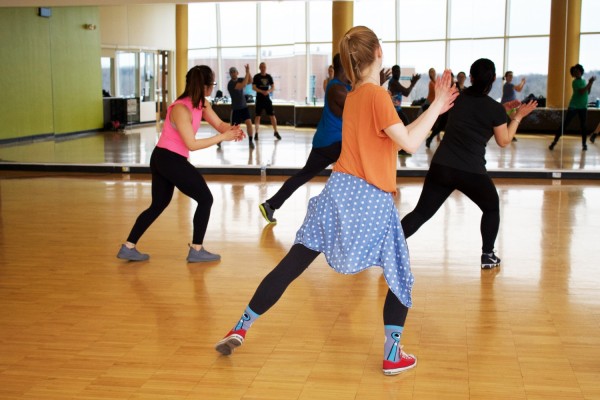High Glucose Levels May Limit One's Capability to Do Aerobic Exercise

Doctors recommend this form of exercise to people with diabetes to manage their condition and regulate the body's needs.
Scientists at Harvard Medical School's teaching and research affiliate Joslin Diabetes Center have recently published new research that may explain why individuals with diabetes frequently find it heart to improve this capacity.
Almost everyone knows, regular exercise offers different health benefits, which even becomes amplified as an individual increases his capacity for aerobic.
To ensure that people with diabetes get to achieve what their body needs other than medicine, doctors are recommending a form of exercise to manage their diabetes.
Hyperglycemia is described as a form of higher-than-normal levels of glucose, which may stop one from intensifying his aerobic capability and attaining health benefits that such sort of exercise can provide.
Additionally, scientists have examined this reduced impact of aerobic exercise in people experiencing chronic hyperglycemia. This is specifically true when blood sugar levels are within the prediabetes range, as exhibited in mice used as models.
ALSO READ: Top Three Drinks to Consider, and One to Avoid When Losing Weight
Observing Hyperglycemic Rodents
The study's senior investigator, Professor Sarah Lessard said that the idea behind this study, which was recently published in the journal Nature Metabolism, is that the notion behind this research was to see if an induced condition of high blood sugar in mice would damage the animals' ability to enhance aerobic fitness.
During the development of this study, the scientists were hoping to discover more about the instruments or devices behind the probable impact, in an initiative to find new ways of providing support to people who have hyperglycemia as they enhance their levels of fitness.
At first, Prof. Lessard and his fellow study authors increased levels of blood sugar in two groups of mice. Initially, the first group was given sugar- and fat-rich Western diet. As a result, the said animal models gained weight and turned out to be hyperglycemic.
Meanwhile, the second group received a diet with less fat and sugar. Consequently, weight gain took place. Nevertheless, the mice still had hyperglycemia, resulting from modifications that led to the production of less insulin.
As part of the study, both groups of mice had equal amounts of exercise, roughly running 500 kilometers or an equivalent of 311 miles throughout the research period.
Still, as indicated in the study, compared against a control group with lower levels of blood sugar, both groups of hyperglycemic mice unsuccessfully gained a considerable capability to exercise.
Having both groups develop the condition proposes that such impact is linked to glucose, instead of obesity or the insulin effects.
DON'T MISS THIS: A Rare Condition of Brain Fluid Leaking Due to Pilates? Here's What You Need to Know
Observation in Muscle Tissues
Prof. Lessard said that usually, muscle tissues change, resulting from aerobic exercise, and muscle fibers turn out to be more helpful with the use of oxygen.
They also developed new blood vessels, so they could allow more oxygen to be delivered to the muscle. This way, it could help in the enhancement of levels of aerobic fitness.
Nevertheless, the scientists saw no specific muscle adaptation in the mice, which were found to be hyperglycemic.
They suggested that high sugar levels interfere with the muscle's remodeling by modifying proteins in the space between muscle cells, where there is usually the formation of new blood vessels.
Additionally, researchers also said that the probable factor might be the inability of the c-Jun N-terminal kinase, or JNK, to function properly.
Such a signaling pathway may serve as a "molecular switch" that programs a muscle to respond to a specific exercise type.
In past studies, according to Prof Lessard, the use of hyperglycemic mice as models showed that using the JNK pathway might not produce the right outcome.
It was also identified that hyperglycemic animals have fewer blood vessels and bigger fibers, more typical of strength training, instead of aerobic exercise.
Hyperglycemic People
Prof. Lessard also said that she and her team followed clinical trials in humans and discovered the same results. They were able to determine one group that presented that the issue was severe.
Furthermore, the scientists saw that people who have damaged glucose intolerance--where blood sugar levels increase with glucose consumption--had the slightest increases in terms of aerobic capability.
This was partly because of the JNK pathway's malfunction. Professor Lessard also explained that looking at the manner their muscles reacted to a single short period of a usual aerobic workout, they saw that those with the lowest glucose tolerance had the highest activation of the JNK signaling pathway, which is preempting the variations of aerobic exercises.
IN CASE YOU MISSED THIS: 4 Best Beverages You Can Drink If You Have Diabetes
Aug 03, 2020 07:00 AM EDT





